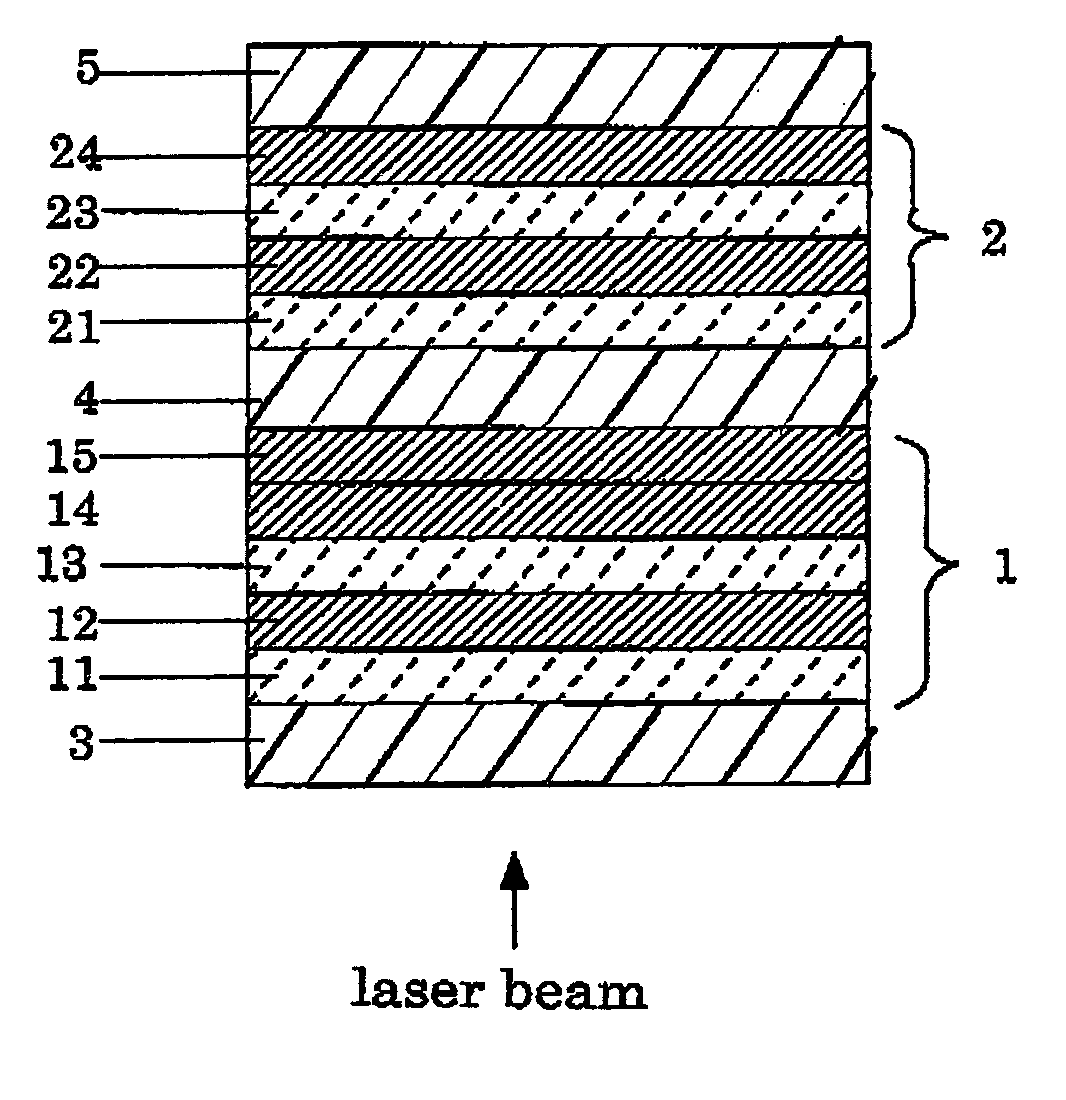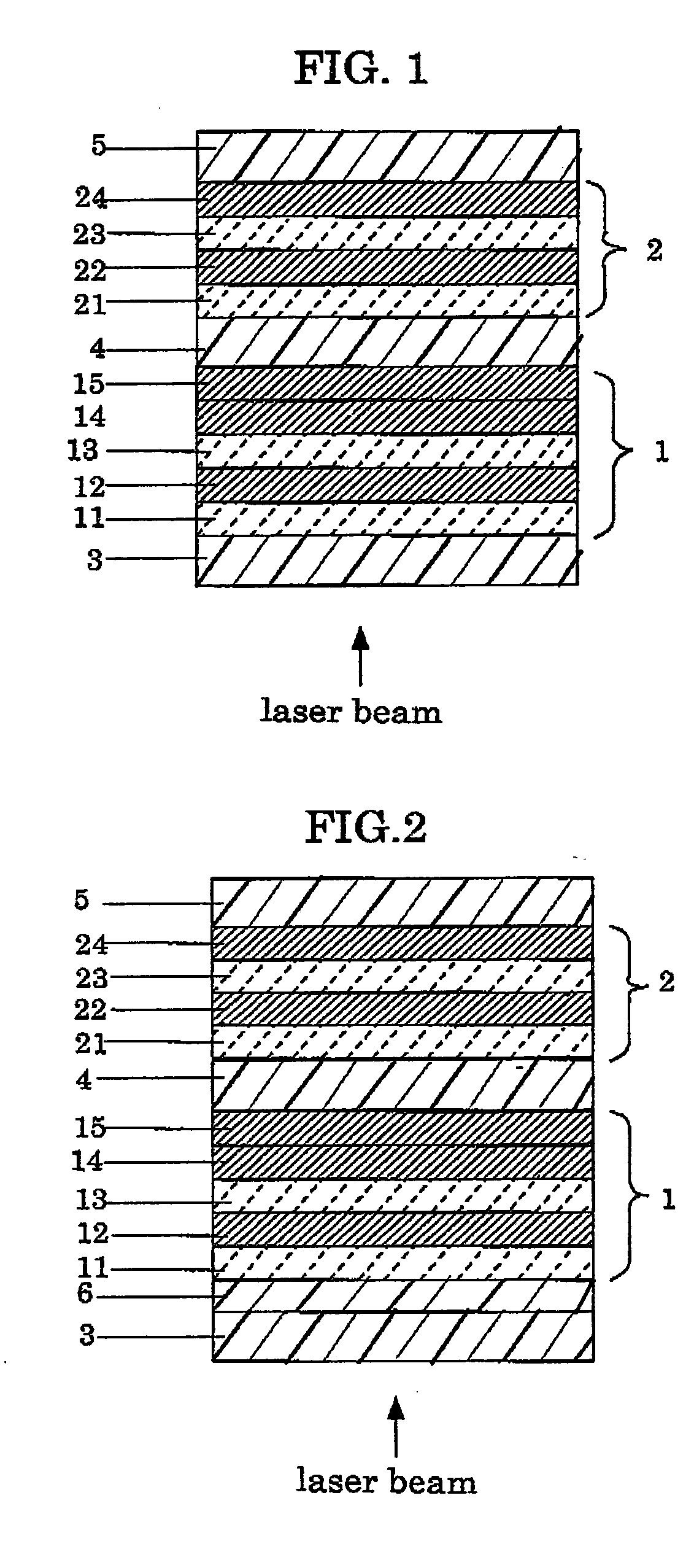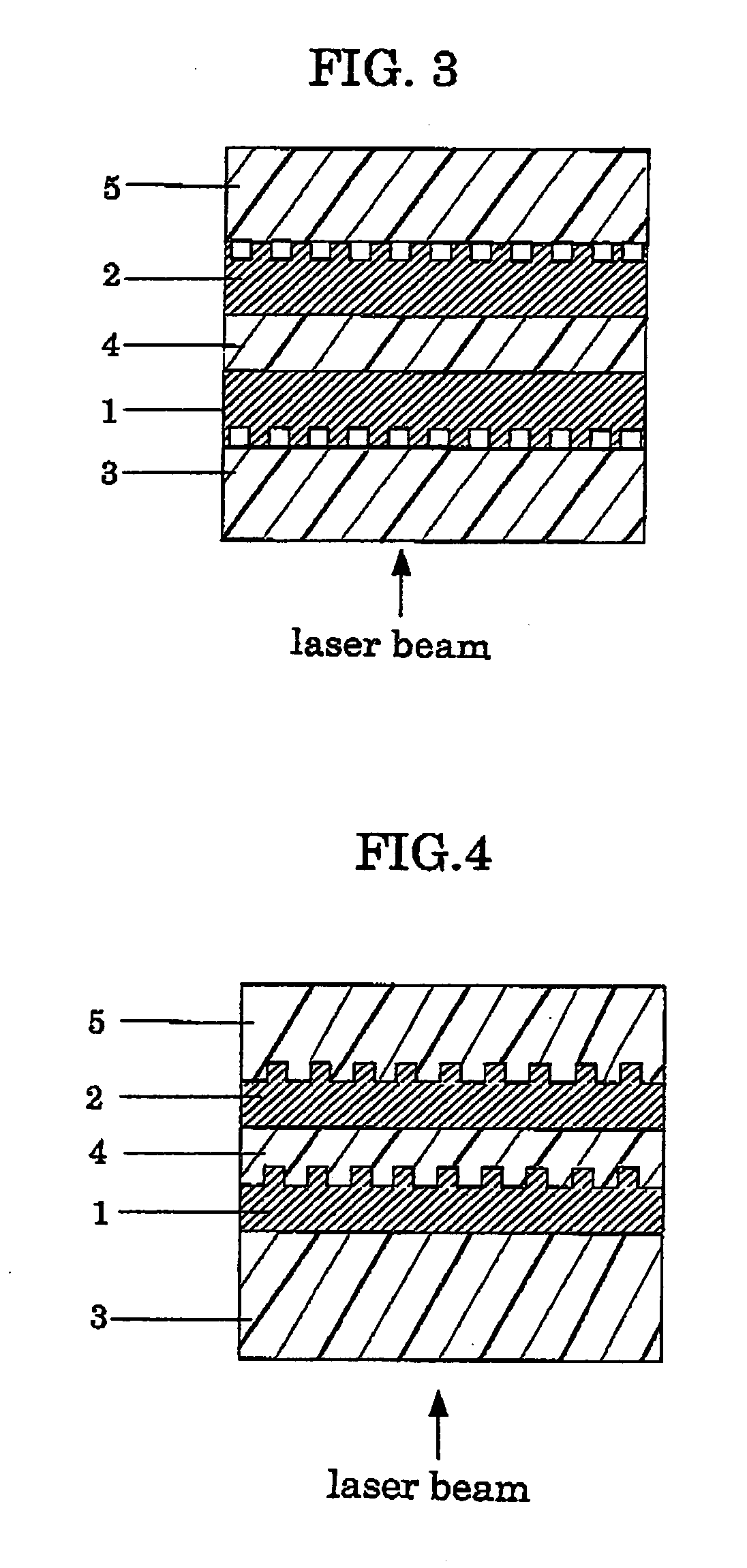Multilayer phase-change information recording medium, and method for recording and reproducing using the same
- Summary
- Abstract
- Description
- Claims
- Application Information
AI Technical Summary
Benefits of technology
Problems solved by technology
Method used
Image
Examples
example 1
Preparation of a Bilayer Phase-Change Information Recording Medium
[0118] First, as a preliminary experiment, a thermal diffusion layer is having a thickness of approx. 200 nm was prepared by using a TiO2 and In2O3-sintered target and an argon (Ar) gas, as a film-forming gas, on a substrate made from a polycarbonate resin and by sputtering the target using a sheeting sputtering apparatus (manufactured by Balzers AG). The atomic ratio of indium (In) in this thermal diffusion layer, In / (In +Ti), was measured. For the measuring method, the composition of the thermal diffusion layer was obtained by the XPS (x-ray photoelectron spectroscopy analysis) and then the atomic ratio of indium, In / (In+Ti), was calculated based on the results of the composition. Table 1 shows the results.
[0119] A first lower protective layer containing ZnS and SiO2 was formed on a first substrate made from a polycarbonate resin having a diameter of 12 cm, a thickness of 0.6 mm with tracking guides in the form o...
example 2
Preparation of a Bilayer Phase-Change Information Recording Medium
[0125] A bilayer phase-change information recording medium for Example 2 was prepared in the same manner as Example 1 except that a ZrO2 and In2O3 sintered target was used for the thermal diffusion layer, and a mixed gas of an Ar gas and an oxygen gas (Ar:O2=10:0.2 (volume ratio)) was used as a film-forming gas.
[0126] In addition, as a preliminary experiment, a thermal diffusion layer having a thickness of approx. 200 nm was prepared by using a ZrO2 and In2O3-sintered target and a mixed gas of an argon (Ar) gas and an oxygen gas (Ar:O2=10:0.2 (volume ratio)) as a film-forming gas, on a substrate made from a polycarbonate resin and by sputtering the target using a sheeting sputtering apparatus (manufactured by Balzers AG). The atomic ratio of indium (In) in this thermal diffusion layer, In / (In +Zr), was measured. For the measuring method, the composition of the thermal diffusion layer was obtained by the XPS (x-ray ...
example 3
Preparation of a Bilayer Phase-Change Information Recording Medium
[0128] A bilayer phase-change information recording medium for Example 3 was prepared in the same manner as Example 1 except that a TiO2, In2O3 and SnO2-sintered target was used for the thermal diffusion layer, and a mixed gas of an Ar gas and an oxygen gas (Ar:O2=10:0.2 (volume ratio)) was used as a film-forming gas.
[0129] In addition, as a preliminary experiment, a thermal diffusion layer having a thickness of approx. 200 nm was prepared by using a TiO2, In2O3 and SnO2-sintered target and a mixed gas of an argon (Ar) gas and an oxygen gas (Ar:O2=10:0.2 (volume ratio)) as a film-forming gas, on a substrate made from a polycarbonate resin and by sputtering the target using a sheeting sputtering apparatus (manufactured by Balzers AG). The atomic ratio of indium (In) in this thermal diffusion layer, In / (In+Ti+Sn), was measured. For the measuring method, the composition of the thermal diffusion layer was obtained by t...
PUM
| Property | Measurement | Unit |
|---|---|---|
| Thickness | aaaaa | aaaaa |
| Thickness | aaaaa | aaaaa |
| Thickness | aaaaa | aaaaa |
Abstract
Description
Claims
Application Information
 Login to View More
Login to View More - R&D
- Intellectual Property
- Life Sciences
- Materials
- Tech Scout
- Unparalleled Data Quality
- Higher Quality Content
- 60% Fewer Hallucinations
Browse by: Latest US Patents, China's latest patents, Technical Efficacy Thesaurus, Application Domain, Technology Topic, Popular Technical Reports.
© 2025 PatSnap. All rights reserved.Legal|Privacy policy|Modern Slavery Act Transparency Statement|Sitemap|About US| Contact US: help@patsnap.com



